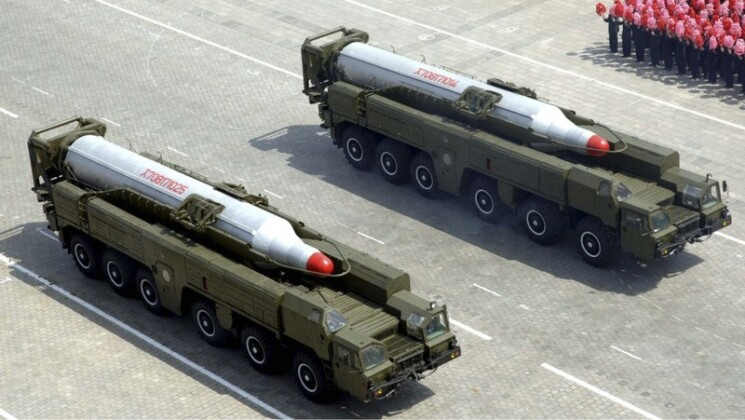Will Iran Use North Korean Hwasong-10 Ballistic Missiles in its Next Round of Strikes on Israel which was already procured.
Defence affairs analysis
Following the cessation of Iranian-Israeli hostilities in a ceasefire June 24, 11 days after they had been initiated, speculation has continued to grow regarding how Iran may respond to a possible new wave of attacks on its territory.
Prior Iranian strikes on Israeli targets made use of a wide range of missiles, from the lower end Shahab-3 which began to enter service in the late 1990s, to the solid fuelled Fattah which uses a hypersonic glide vehicle for guidance. While Iran’s ballistic missile development has for decades relied heavily on components and technology transfers from North Korea, the country has also procured a small number of North Korean missiles ‘off the shelf’. Although the vast majority of these procurements were short ranged Hwasong-5 and Hwasong-6 models sold during the 1980s and 1990s, a small number of Hwasong-10 missiles were also reportedly transferred. When acquired in the mid-2000s, they were by far the most capable in the Iranian arsenal.
U.S. and South Korean intelligence reported the Hwasong-10’s entry into service in 2006, after reports in January that year indicated that it had been flight tested in Iran under North Korean supervision. These exports were a particularly sensitive issue at a time when a Western attack on Iran was under consideration. In 2009 a secret telegram distributed by the office of the U.S. Secretary of State highlighted concerns that the Hwasong-10’s engine “represents a substantial advance in North Korea’s liquid propellant technology,” and “allows North Korea to build even longe range missiles – or shorter range missiles with greater payload capacity – than would be possible using Scud-type technology.” Experts would note that footage of Hwasong-10 engine testing “showed a plume with a much clearer colour than Scud-type engines using simple IRNFA and Kerosene propellants, indicating a more energetic propellant with revolutionary implications for the performances of its future missiles. This was one of the clearest indications that the country’s missile program had reached a far more advanced stage.” An enhanced longer ranged variant of the missile able to strike up to 4000 kilometres away entered service in the Korean People’s Army in 2016, but was quickly followed by its more advanced successor the Hwasong-12 in 2017, and by the next generation Hwasong-16 in 2024.



Comments
Post a Comment